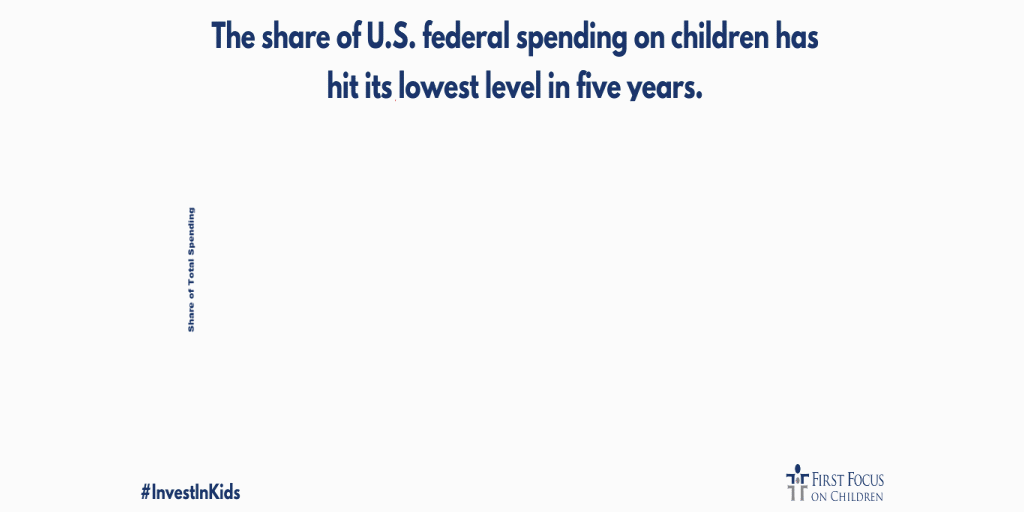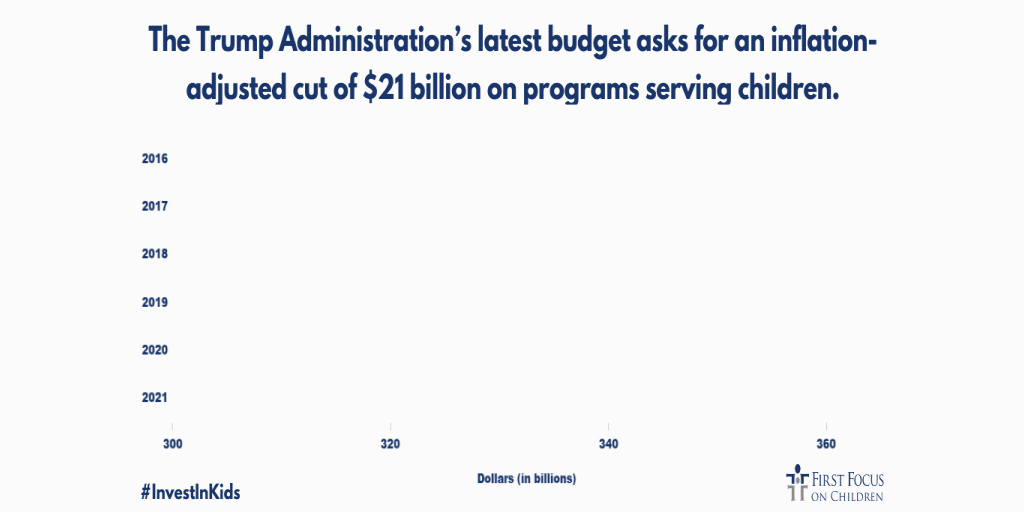The share of U.S. federal spending on children has hit its lowest level in five years, according to new research from First Focus on Children, even as the global pandemic threatens to reverse economic gains made since the Great Recession.
Children make up one-quarter of the U.S. population. Yet just 7.48% of all federal spending went toward their well-being in FY2020, First Focus found in its most recent federal budget analysis. The numbers represent a 2% decrease in share from FY2019 and a nearly 9% decrease across the last five fiscal years from FY2016 to FY2020. President Trump’s FY2021 budget request would push that share even lower, to just 7.32%.

Congress will begin its FY2021 budgeting process in earnest this week and will be forced to weigh programming priorities against pandemic response and the demands of a cratering economy. Lawmakers must ensure that the health, well-being and future of our children rise to the top of the list. At a minimum, the budget process must not further lower the dismal share we already allot our kids.
“The pandemic and its economic fallout have made a difficult situation for children even worse,” said Bruce Lesley, president of First Focus on Children. “We are the richest country in the world, yet we give our children just a tiny piece of our pie. Children were already losing health care and regular meals, and our child poverty rate was among the developed world’s highest. The coronavirus is pushing these numbers skyward, with Black and brown children disproportionately harmed. Only by putting children first in all of its upcoming budget decisions can Congress hope to avoid an even longer, deeper recession.”
The First Focus 2019 Children’s Budget revealed that the United States — for the first time — spent a greater share of the federal budget servicing the national debt than supporting the children who will inherit it. That trend continued in our FY2020 analysis and will likely deepen as the pandemic continues to batter the economy.
The Trump Administration’s FY2021 budget request would reduce the share of federal spending on children by another 2.1% to just 7.32%. The reduction represents an inflation-adjusted cut of $21 billion on programs serving children in FY2021. The president also seeks to eliminate or financially suffocate 55 current programs that aid low-income students, subsidize heating costs for low-income kids and otherwise support children’s health, education and well-being.

Yet the pandemic means our children desperately need more, not less, help. Hunger and homelessness are on the rise, millions of K-12 students are falling behind because they lack internet access at home, and experts predict that widespread unemployment could spike child poverty by as much as 53%.
The one-time economic impact payments authorized in the CARES Act helped struggling families and children, but significantly undervalued kids with payments that were less than half of what adults received: $1,200 for adults versus $500 per child. Many children were left out entirely because of their or their parents’ immigration status. In addition, the complicated distribution of payments to those who do not file taxes or receive Social Security will make it difficult for many eligible families to access their payments.
Congress must use the upcoming budget process to reverse these trends. Only by putting children first can lawmakers hope to blunt the pandemic’s impact on the future.
First Focus on Children will release its comprehensive analysis of the federal budget and the more than 200 programs aimed at children this fall.
